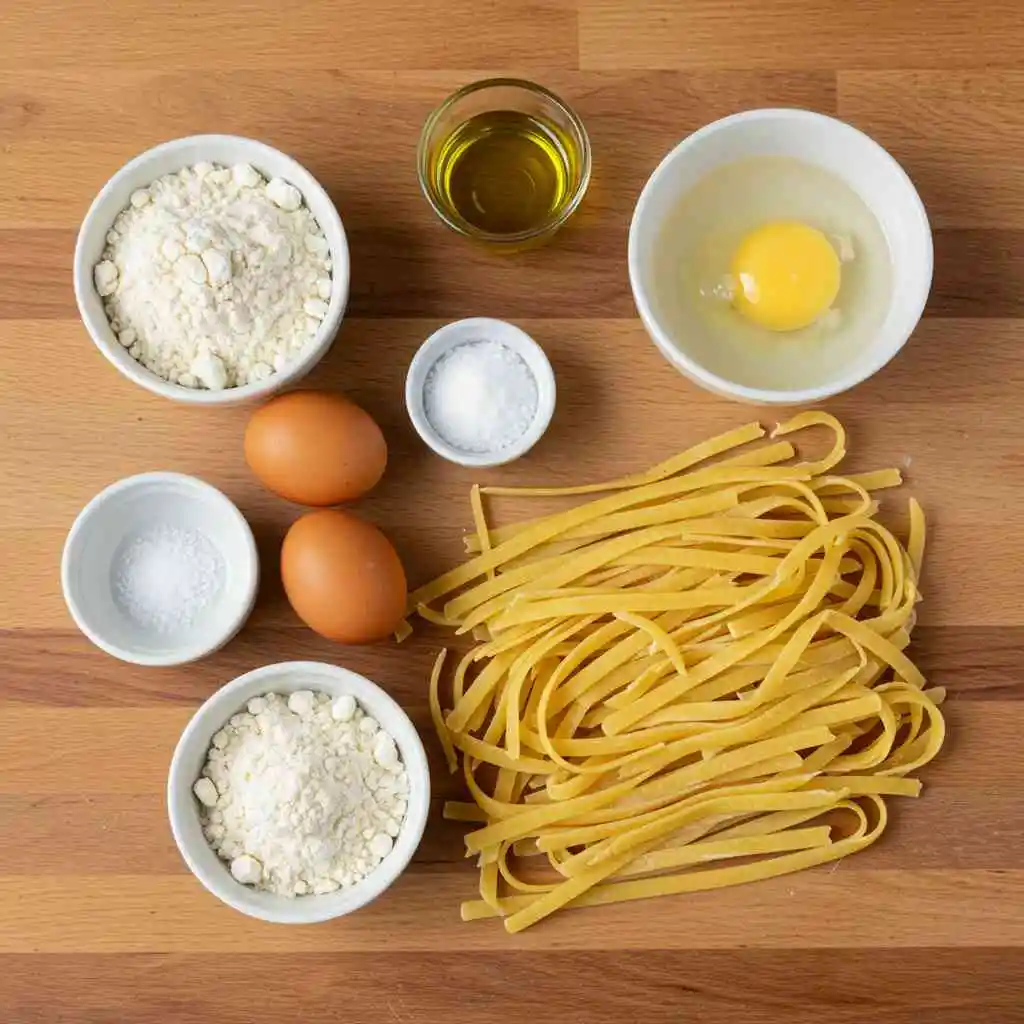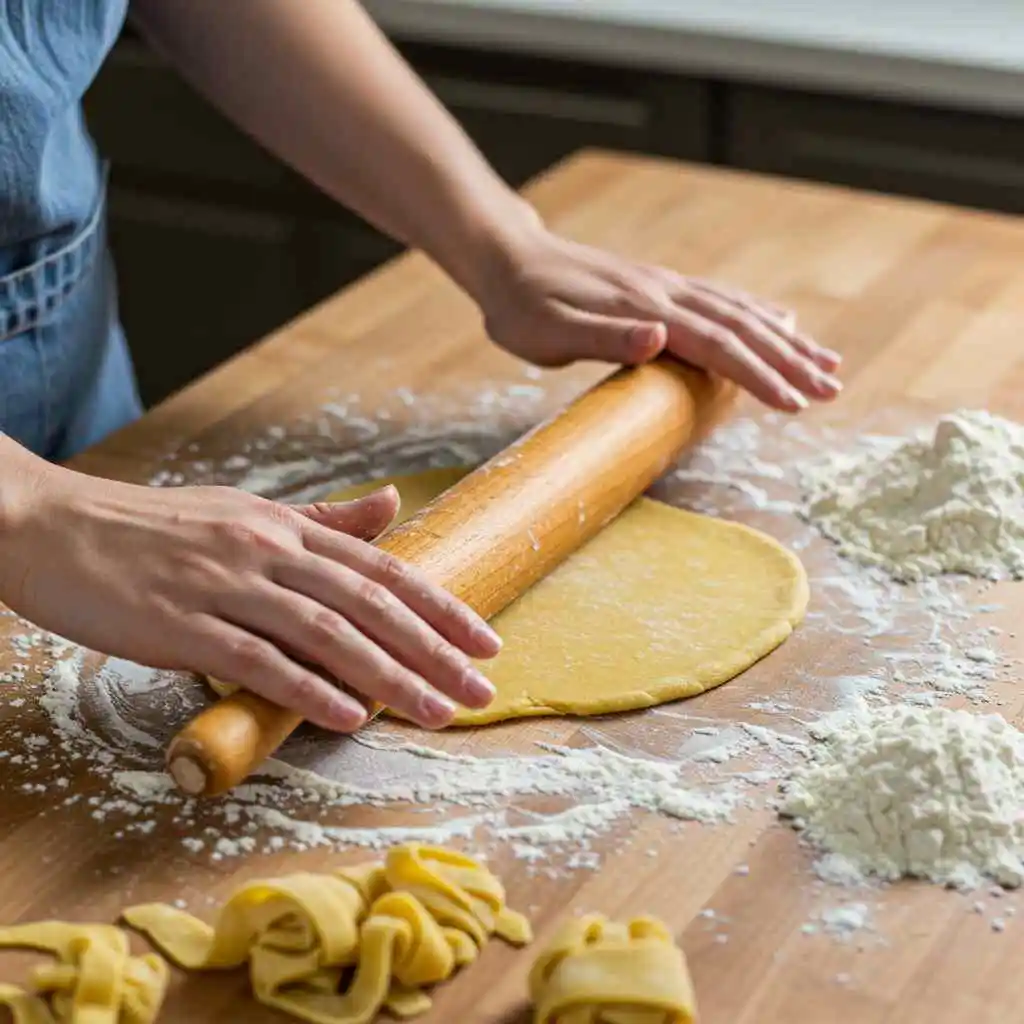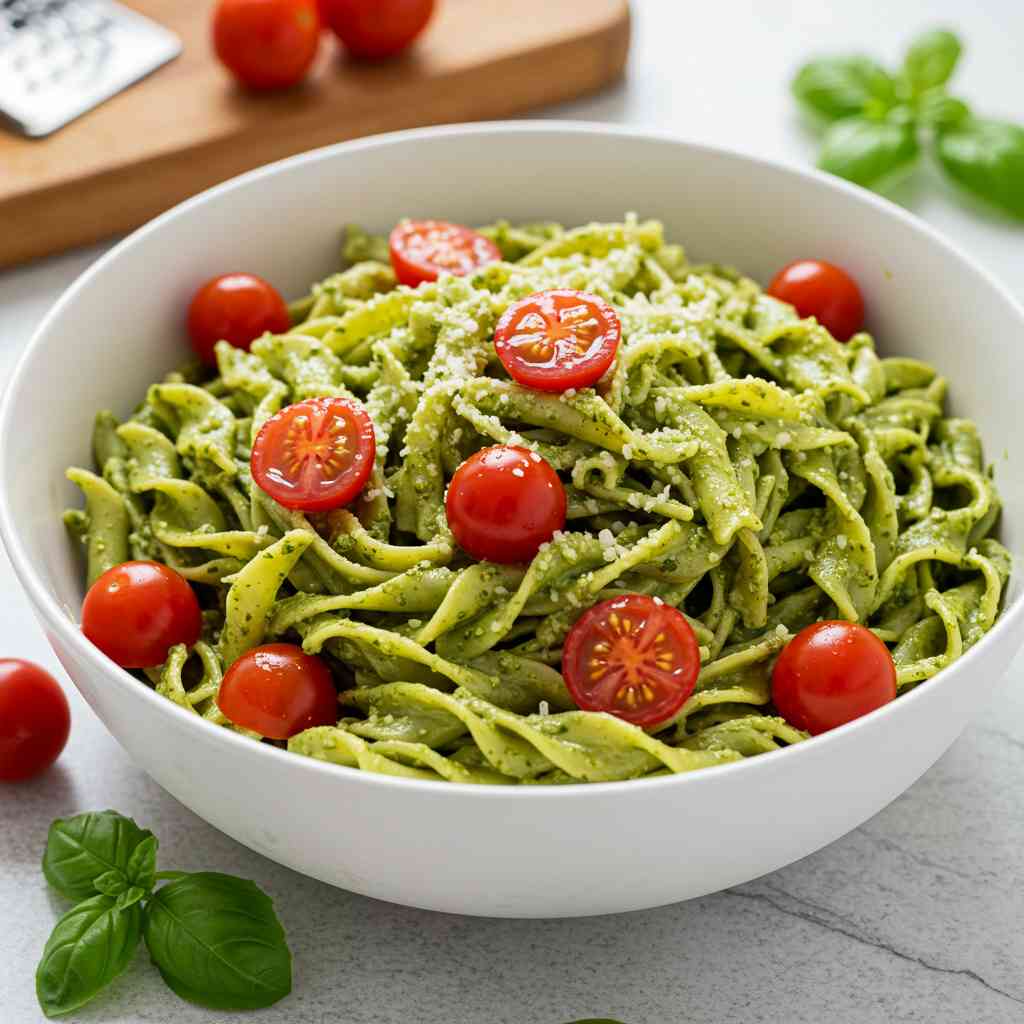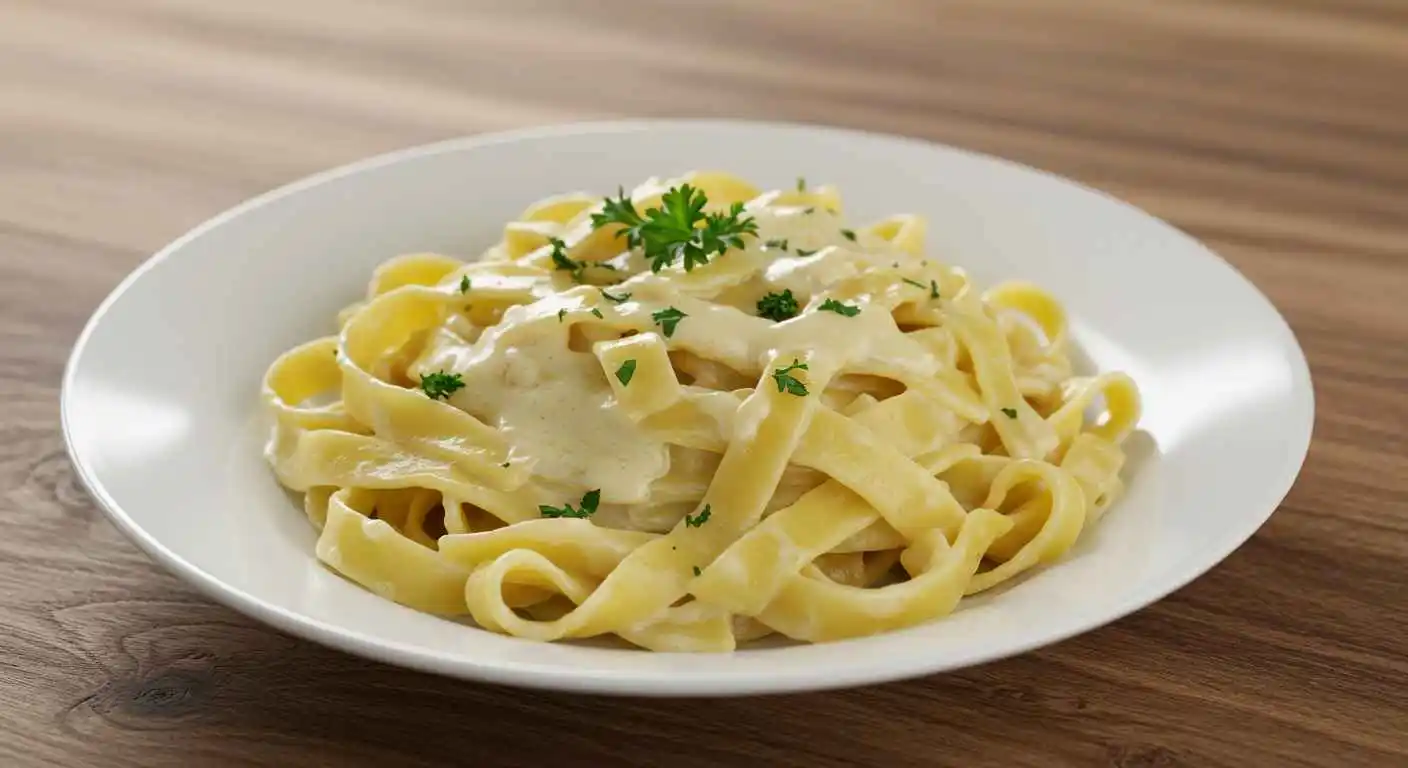Craving a comforting bowl of noodles but need a gluten-free option? Look no further than this gluten free egg noodles recipe! Whether you’re avoiding gluten for health reasons or simply exploring new culinary horizons, these noodles are here to transform your meals. Light, tender, and incredibly versatile, they’re perfect for everything from hearty pasta bakes to quick stir-fries.
Imagine digging into a plate of perfectly cooked noodles, coated in your favorite sauce, without a hint of gluten in sight. Sounds dreamy, right? With this gluten-free noodle recipe, you can enjoy all the flavors and textures you love, while keeping your meals wholesome and inclusive. Ready to whip up a dish that’s as easy to make as it is delicious? Let’s get started
Table of Contents
Key Benefits of Gluten Free Egg Noodles
If you’ve ever wondered why gluten free egg noodles are gaining so much love, you’re in for a treat! These noodles aren’t just a fantastic alternative for those avoiding gluten—they’re a versatile, delicious, and nutritious addition to any kitchen. Here’s why they’re worth every bite:
1. Perfect for Gluten-Free Diets
Whether you’re managing celiac disease, gluten sensitivity, or simply exploring gluten-free options, these noodles let you enjoy your favorite dishes without compromise. Think creamy pasta bakes, savory stir-fries, or comforting soups—all gluten-free and full of flavor!
2. Incredibly Versatile
Gluten free egg noodles are a blank canvas for your culinary creativity. Use them in:
- Italian-inspired dishes: Think lasagna, fettuccine Alfredo, or spaghetti carbonara.
- Asian-style meals: Perfect for lo mein, pad Thai, or ramen.
- Comfort food classics: From chicken noodle soup to cheesy casseroles.
3. Rich in Flavor and Texture
Unlike some gluten-free alternatives that can be gritty or bland, these noodles boast a tender, chewy texture and a delicate flavor that pairs beautifully with sauces, broths, and toppings.
4. Quick and Easy to Cook
Short on time? No problem! Gluten free egg noodles cook in just minutes, making them a lifesaver for busy weeknights or last-minute meals.
5. Packed with Wholesome Ingredients
Many gluten free egg noodles are made with nutrient-rich flours like rice, quinoa, or chickpea, offering a healthier twist on traditional noodles.
6. Widely Available
You don’t need to hunt down specialty stores—gluten-free egg noodles are now stocked in most grocery stores and online retailers, making them easy to find and affordable.
7. Meal Prep Friendly
Cook a big batch and use them throughout the week for quick lunches, dinners, or even cold noodle salads. They’re a meal prepper’s dream!
With so many benefits, it’s no wonder gluten free egg noodles are becoming a kitchen staple. Ready to see how easy they are to make? Let’s dive into the ingredients!
Ingredients

Ready to make your own gluten-free egg noodles? Here’s everything you’ll need to create these tender, flavorful noodles from scratch. The best part? You only need a handful of simple, wholesome ingredients—most of which you probably already have in your pantry!
- 1 ½ cups gluten-free flour blend (look for blends with xanthan gum for the best texture).
- 3 large eggs (room temperature for easier mixing).
- 1 tablespoon olive oil (or any neutral oil for added flexibility).
- 2-3 tablespoons water (as needed to adjust dough consistency).
- ½ teaspoon salt (to enhance the flavor).
Why These Ingredients Work
- Gluten-Free Flour Blend: The base of your noodles, providing structure and a tender bite.
- Eggs: Add richness, flavor, and help bind the dough together.
- Olive Oil: Keeps the dough pliable and prevents it from drying out.
- Salt: Balances the flavors and enhances the overall taste.
Optional Add-Ins for Extra Flavor
- 1 teaspoon garlic powder (for a savory twist).
- 1 teaspoon dried herbs (like parsley or basil for an aromatic touch).
- 1 tablespoon nutritional yeast (for a cheesy flavor).
Pro Tip: Choosing the Right Flour
Not all gluten-free flours are created equal! For the best results, use a blend specifically designed for baking or pasta-making. Brands like Bob’s Red Mill or King Arthur Flour are great options.
With your ingredients ready, it’s time to roll up your sleeves and start making your gluten free egg noodles! Let’s move on to the step-by-step instructions.
Instructions
Making gluten-free egg noodles from scratch is easier than you think! Follow these simple steps to create tender, flavorful noodles that will elevate your favorite dishes. Let’s get started!
Step 1: Prepare the Dough
- In a large mixing bowl, combine 1 ½ cups gluten-free flour blend and ½ teaspoon salt.
- Create a well in the center of the flour and crack in 3 large eggs. Add 1 tablespoon olive oil.
- Using a fork or your hands, gently mix the eggs and oil into the flour until a dough begins to form.
- If the dough feels too dry, add 1-2 tablespoons of water, one at a time, until it comes together.
Pro Tip: If you have a stand mixer, use the dough hook attachment to make this step even easier!

Step 2: Knead the Dough
- Transfer the dough to a lightly floured surface (use gluten-free flour to prevent sticking).
- Knead the dough for 5-7 minutes until it becomes smooth and elastic. Gluten-free dough may feel slightly different than traditional dough, but it should hold together well.
Pro Tip: If the dough feels sticky, sprinkle a little more gluten-free flour as you knead.
Step 3: Roll Out the Dough
- Divide the dough into 4 equal portions for easier handling.
- Using a rolling pin, roll out each portion into a thin sheet (about ⅛-inch thick). In case of a pasta machine, use it to achieve an even thickness.
Pro Tip: For extra-thin noodles (like angel hair), roll the dough as thinly as possible. For thicker noodles (like fettuccine), leave it slightly thicker.
Step 4: Cut the Noodles
- Lightly dust the rolled-out dough with gluten-free flour to prevent sticking.
- Use a sharp knife or pizza cutter to slice the dough into your desired noodle width (e.g., thin strips for linguine or wider strips for pappardelle).
- Alternatively, use a pasta machine with a cutting attachment for uniform noodles.
Pro Tip: If you’re not cooking the noodles right away, dust them with gluten-free flour and let them dry on a baking sheet for 15-20 minutes.
Step 5: Cook the Noodles
- Start by boiling a large pot of water, adding a pinch of salt for flavor.
- Toss in the noodles and cook for 2 to 4 minutes, adjusting the time based on their thickness. Gluten-free noodles tend to cook quicker than regular pasta, so be sure to monitor them closely!
- Drain the noodles and toss them with olive oil so to prevent sticking.
Pro Tip: For al dente noodles, taste-test at the 2-minute mark. They should be soft yet firm, with a little resistance when you bite into them
And there you have it—homemade gluten free egg noodles ready to star in your favorite dishes! Now, let’s explore some pro tips and variations to make this recipe your own.
Pro Tips and Variations for Gluten Free Egg Noodles
Now that you’ve mastered the basics of making gluten free egg noodles, let’s take your skills to the next level! Whether you’re looking to customize the flavor, troubleshoot common issues, or experiment with new ideas, these pro tips and variations will help you create noodles that are uniquely yours.
Pro Tips for Perfect Noodles
- Keep the Dough Hydrated: Gluten-free dough can dry out quickly. If it feels crumbly, add a teaspoon of water at a time until it’s smooth and pliable.
- Roll Thin, But Not Too Thin: Aim for about ⅛-inch thickness. If the dough is too thin, it may tear; if it’s too thick, the noodles will be chewy.
- Prevent Sticking: Dust your work surface, rolling pin, and dough generously with gluten-free flour to avoid sticky situations.
- Cook Immediately or Dry: Fresh noodles cook best right away, but if you need to store them, let them dry on a baking sheet for 15-20 minutes before transferring to an airtight container.
- Don’t Overcook: Gluten-free noodles cook faster than traditional ones—usually in just 2-4 minutes. Taste-test early to avoid mushy noodles.
Flavor Variations
- Herbed Noodles: Add 1-2 teaspoons of dried herbs (like basil, oregano, or thyme) to the dough for a fragrant twist.
- Spinach Noodles: Blend ½ cup of cooked spinach (squeezed dry) into the dough for vibrant green noodles packed with nutrients.
- Spicy Noodles: Mix in 1 teaspoon of chili flakes or ½ teaspoon of cayenne pepper for a kick of heat.
- Cheesy Noodles: Stir in 2 tablespoons of nutritional yeast or grated Parmesan (if not strictly dairy-free) for a rich, savory flavor.
Dietary Adaptations
- Vegan Option: Replace the eggs with a flaxseed or chia seed egg (1 tablespoon ground flax/chia + 3 tablespoons water per egg).
- Low-Carb Version: Use a low-carb gluten-free flour blend, like almond or coconut flour, for a keto-friendly alternative.
Troubleshooting Common Issues
- Dough Too Dry? Add water, one teaspoon at a time, until the dough comes together.
- Dough Too Sticky? Sprinkle more gluten-free flour while kneading or rolling.
- Noodles Sticking Together? Toss cooked noodles with a little olive oil or rinse them briefly under cold water.
Storage Tips
- Fresh Noodles: Store in an airtight container in the fridge for up to 2 days.
- Dried Noodles: Let them dry completely, then store in an airtight container for up to 1 month.
- Freezing: Freeze uncooked noodles on a baking sheet, then transfer to a freezer bag. You can cook them straight from the freezer—just add an additional minute to the cooking time.
With these tips and variations, you can make gluten free egg noodles that suit your taste and dietary needs perfectly. Ready to serve them up? Let’s move on to some delicious serving suggestions!
Serving Suggestions for Gluten Free Egg Noodles
Now that you’ve made your delicious gluten free egg noodles, it’s time to turn them into a show-stopping meal! These noodles are incredibly versatile, so whether you’re craving something comforting, light, or packed with flavor, I’ve got you covered. Here are some mouthwatering ideas to inspire your next dish:
1. Classic Comfort Food
- Creamy Alfredo: Toss your noodles with a rich, homemade Alfredo sauce made from butter, garlic, cream, and Parmesan cheese. Add grilled chicken or sautéed mushrooms for extra heartiness.
- Hearty Soups: Drop a handful of noodles into your favorite soups, like chicken noodle or vegetable broth, for a comforting, gluten-free twist.
2. Asian-Inspired Dishes
- Stir-Fries: Sauté your noodles with colorful veggies, tofu, or shrimp, and drizzle with a savory stir-fry sauce made from soy sauce (or tamari for gluten-free), sesame oil, and a touch of honey.
- Ramen Bowls: Serve your noodles in a flavorful broth topped with soft-boiled eggs, green onions, and a sprinkle of sesame seeds.
3. Light and Fresh Options

- Pesto Pasta: Toss your noodles with homemade basil pesto, cherry tomatoes, and a handful of arugula for a fresh, vibrant meal.
- Cold Noodle Salads: Chill cooked noodles and mix them with a tangy vinaigrette, crunchy veggies, and your choice of protein for a perfect summer dish.
4. Family Friendly Favorites
- Mac and Cheese: Use your noodles in a gluten-free mac and cheese recipe for a creamy, cheesy treat everyone will love.
- Casseroles: Layer your noodles with marinara sauce, ricotta, and mozzarella for a gluten-free lasagna bake.
5. Gourmet Twists
- Truffle Noodles: Drizzle cooked noodles with truffle oil, sprinkle with Parmesan, and top with fresh herbs for a restaurant-worthy dish.
- Seafood Pasta: Pair your noodles with a light lemon-garlic butter sauce, succulent shrimp, and tender clams for a fresh and vibrant seafood pasta that’s both luxurious and easy to make.
Pro Tip: Pairing Sauces
- Creamy Sauces: Stick to lighter sauces for thin noodles (like angel hair) and richer sauces for thicker noodles (like fettuccine).
- Broth-Based Dishes: Use thinner noodles for soups and broths to ensure they absorb the flavors beautifully.
With these serving suggestions, your gluten free egg noodles will shine in every dish. Ready to wrap things up? Let’s head to the conclusion and FAQs!
Conclusion
There you have it—everything you need to make, customize, and enjoy delicious gluten-free egg noodles! Perfect for weeknight dinners or weekend feasts, these noodles are versatile, easy to make, and a great gluten-free alternative. If you’re curious to know more about gluten-free diets, check out this informative article on gluten-free diets.
So, grab your ingredients and start cooking! Whether it’s a creamy Alfredo, a zesty stir-fry, or a comforting soup, these noodles will quickly become a kitchen staple. Share your creations with friends and family, and don’t forget to check out the FAQs below if you have any questions!
FAQs About Gluten Free Egg Noodles
1. Can I make gluten free egg noodles without eggs?
Absolutely! For a vegan version, replace each egg with a flaxseed or chia seed egg (1 tablespoon ground flax/chia + 3 tablespoons water). The texture might vary a bit, but it’ll still be just as tasty!
2. What’s the best gluten free flour for this recipe?
Look for a gluten-free flour blend that includes xanthan gum, as it helps mimic the elasticity of gluten. Popular brands like Bob’s Red Mill or King Arthur Flour work well. Avoid single-ingredient flours (like almond or coconut flour) unless you’re experimenting with a low-carb version.
3. How do I prevent the noodles from sticking together?
Toss cooked noodles with a little olive oil or rinse them briefly under cold water.
If storing uncooked noodles, dust them generously with gluten-free flour and let them dry before stacking or storing.
4. Can I freeze gluten free egg noodles?
Yes! Freeze uncooked noodles on a baking sheet until solid, then transfer to a freezer bag. Cook directly from frozen, adding an extra minute to the cooking time.
5. How long do fresh gluten-free egg noodles last?
Uncooked: Store in an airtight container in the fridge for up to 2 days or freeze for up to 1 month.
Cooked: Keep in the fridge for 2-3 days. Reheat gently in a pan with a splash of water or broth to prevent drying out.
6. Why did my noodles turn out gummy?
Overcooking is the most common culprit. Gluten-free noodles cook faster than traditional ones, so start taste-testing at the 2-minute mark. Also, avoid overcrowding the pot—cook in batches if needed.
7. Can I use a pasta machine for this recipe?
Definitely! A pasta machine makes rolling and cutting the dough much easier. Just dust the dough with gluten-free flour to prevent sticking as you work.
8. Are gluten-free egg noodles healthier than regular noodles?
They can be! Many gluten-free flours are made with nutrient-rich ingredients like rice, quinoa, or chickpeas. Plus, they’re a great option for those with gluten sensitivities or celiac disease.
Key Details:
- Servings: 4
- Prep Time: 20 minutes
- Cook Time: 5 minutes
- Total Time: 25 minutes
- Courses: Main Course, Side Dish
- Cuisine: International
- Keywords: gluten free egg noodles, gluten-free noodle recipe, homemade gluten-free pasta, egg noodles gluten-free
Calories: Per Serving: Approximately 220 calories (varies based on flour blend and serving size).


3 thoughts on “Gluten Free Egg Noodles: 7 Reasons They’re a Kitchen Staple”